Abstract
Clinicians claim that patients habituate to cold-induced pain during cryokinetic treatments, but this has not heretofore been tested. We treated the right ankle of 38 subjects with a simulated cryokinetic treatment daily for 8 days using either 1° or 5°C water. On days 9 and 10, the right ankle was treated with the opposite temperature and the opposite ankle (left) was treated with the habituation temperature. Cold-induced pain was recorded five times each day (after each ice immersion bout) using Borg's Perceived Pain Scale and the McGill Pain Questionnaire. There was a sharp decrease in pain from days 1 through 5, but no difference between days 5 through 8. Pain during bout one was significantly greater than the following four bouts for all days except day 1. Location of pain changed between days but not between bouts. The instep was the most frequent location of pain for the first 3 days. The choice of “no specific location” increased steadily from day 2 to 8. The number of descriptor terms chosen on the McGill Pain Questionnaire decreased from day 1 to day 8. Exceptions to this were the terms cool, cold, freezing, and numb. Common terms chosen on days 1 through 3 were throbbing, sharp, burning, tingling, hurting, and nagging. On days 9 and 10, pain in the opposite (left) limb was greater than pain at the end of right limb habituation, but similar to day 1 of habituation. Right limb immersion with a lower temperature resulted in greater pain than that perceived on day 8. Daily repeated cryokinetic treatments are sufficient to produce habituation to cold-induced pain. Habituation was specific to the limb treated and temperature of habituation; thus, we conclude it is primarily physiological with some psychological influence. Athletic trainers are justified in telling patients who are undergoing ice water immersion that the cold pain will diminish with repeated applications.
Full text
PDF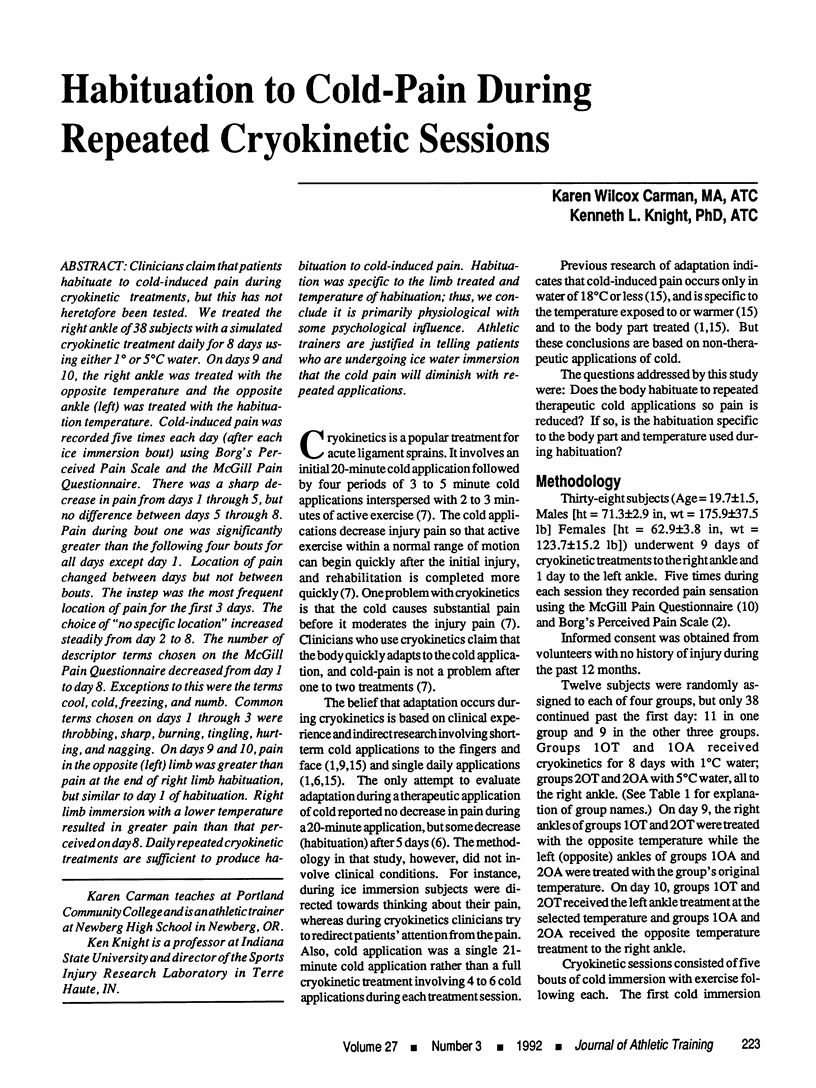
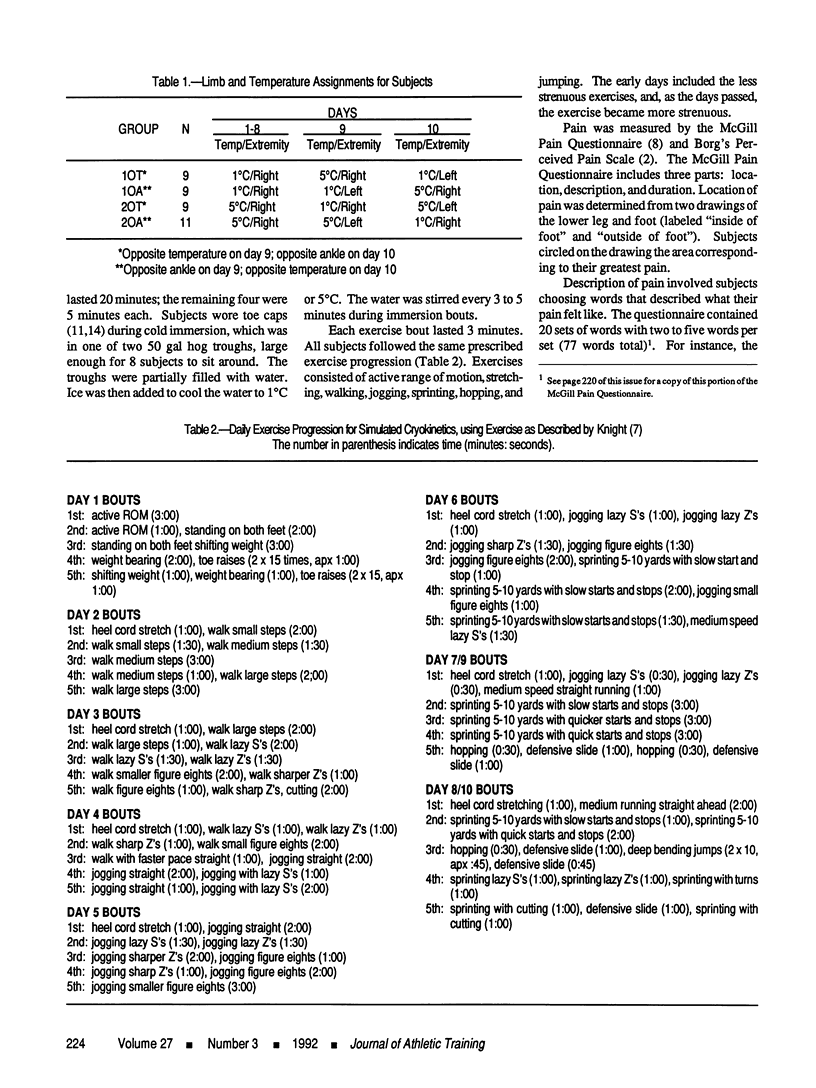
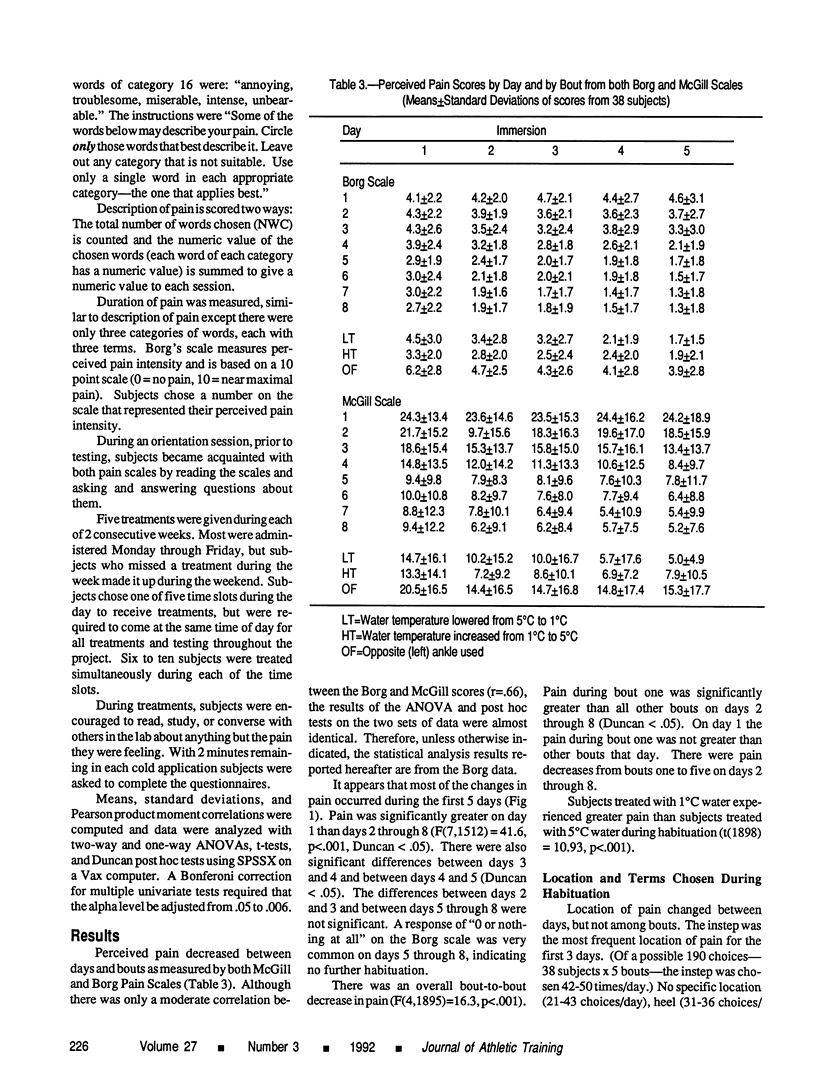
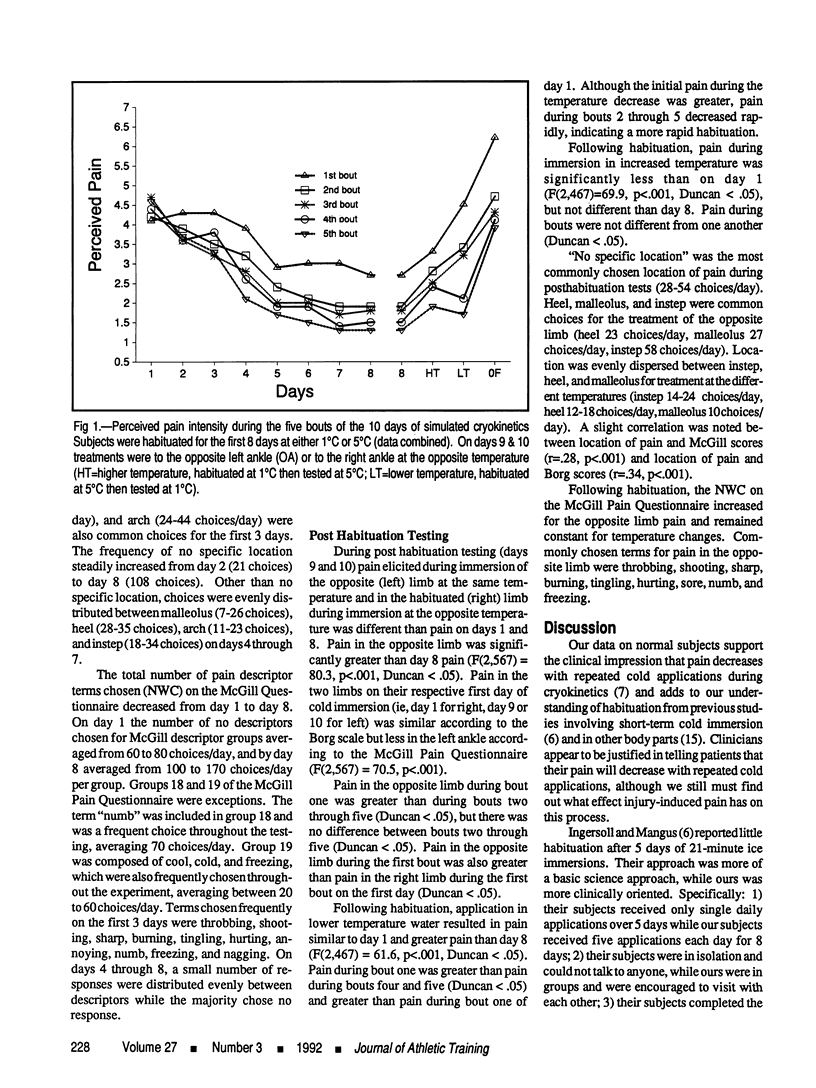
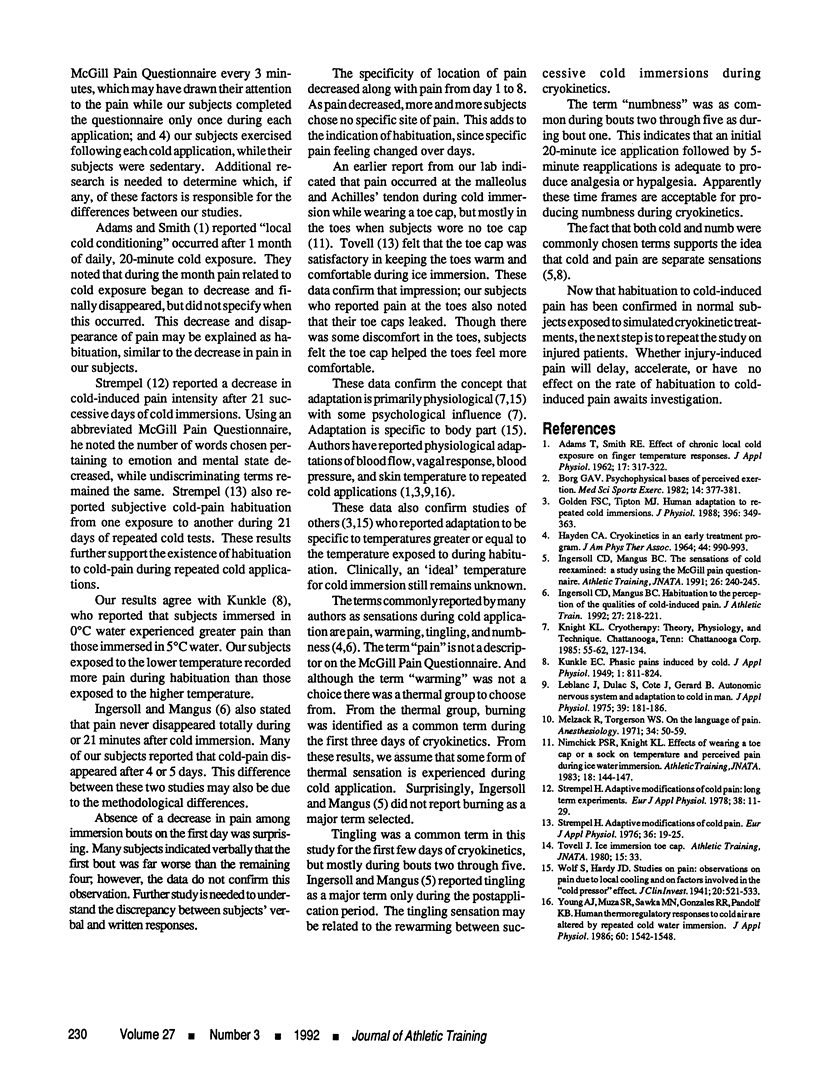
Selected References
These references are in PubMed. This may not be the complete list of references from this article.
- ADAMS T., SMITH R. E. Effect of chronic local cold exposure on finger temperature responses. J Appl Physiol. 1962 Mar;17:317–322. doi: 10.1152/jappl.1962.17.2.317. [DOI] [PubMed] [Google Scholar]
- Borg G. A. Psychophysical bases of perceived exertion. Med Sci Sports Exerc. 1982;14(5):377–381. [PubMed] [Google Scholar]
- Golden F. S., Tipton M. J. Human adaptation to repeated cold immersions. J Physiol. 1988 Feb;396:349–363. doi: 10.1113/jphysiol.1988.sp016965. [DOI] [PMC free article] [PubMed] [Google Scholar]
- HAYDEN C. A. CRYOKINETICS IN AN EARLY TREATMENT PROGRAM. Phys Ther. 1964 Nov;44:990–993. doi: 10.1093/ptj/44.11.990. [DOI] [PubMed] [Google Scholar]
- Ingersoll C. D., Mangus B. C. Habituation to the perception of the qualities of cold-induced pain. J Athl Train. 1992;27(3):218–222. [PMC free article] [PubMed] [Google Scholar]
- LeBlanc J., Dulac S., Côté J., Girard B. Autonomic nervous system and adaptation to cold in man. J Appl Physiol. 1975 Aug;39(2):181–186. doi: 10.1152/jappl.1975.39.2.181. [DOI] [PubMed] [Google Scholar]
- Melzack R., Torgerson W. S. On the language of pain. Anesthesiology. 1971 Jan;34(1):50–59. doi: 10.1097/00000542-197101000-00017. [DOI] [PubMed] [Google Scholar]
- Strempel H. Adaptive Modifikationen des Kälteschmerzes. Eur J Appl Physiol Occup Physiol. 1976 Dec 6;36(1):19–25. doi: 10.1007/BF00421630. [DOI] [PubMed] [Google Scholar]
- Wolf S., Hardy J. D. STUDIES ON PAIN. OBSERVATIONS ON PAIN DUE TO LOCAL COOLING AND ON FACTORS INVOLVED IN THE "COLD PRESSOR" EFFECT. J Clin Invest. 1941 Sep;20(5):521–533. doi: 10.1172/JCI101245. [DOI] [PMC free article] [PubMed] [Google Scholar]
- Young A. J., Muza S. R., Sawka M. N., Gonzalez R. R., Pandolf K. B. Human thermoregulatory responses to cold air are altered by repeated cold water immersion. J Appl Physiol (1985) 1986 May;60(5):1542–1548. doi: 10.1152/jappl.1986.60.5.1542. [DOI] [PubMed] [Google Scholar]


